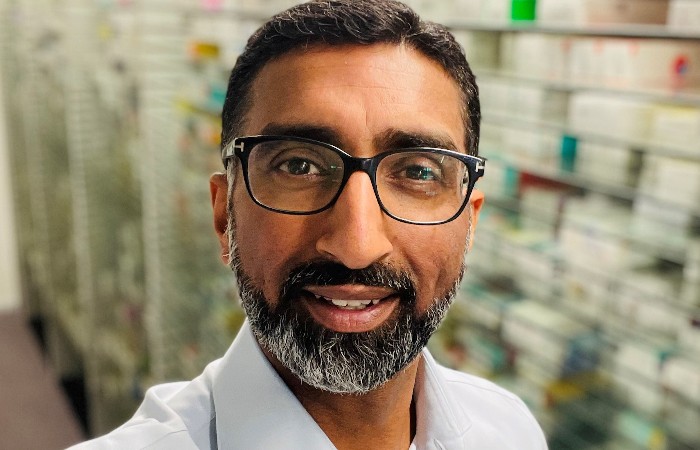Everything, everywhere, all at once
In Views
Follow this topic
Bookmark
Record learning outcomes
We need a diversity of solutions to meet our digital health challenges. Mohammed Hussain explains…
The Oscar for Best Picture this year went to Everything, Everywhere, All at Once. An excellent movie, with the two Asian leads also winning Oscars – a triumph for under-represented groups.
It made me reflect that the vision of digital technology, being everything, everywhere all at once, to improve health is also in danger of leaving some groups behind. Digital inclusion is essential to ensure that everyone is in the rising boat as the digital tide washes in.
The UK Health and Social Care Select Committee has conducted a review of government commitments made on the digitisation of the NHS in February 2023.The review covered four policy areas, and was assessed using five domains: commitment met, funding and resource, impact, appropriateness and finally, overall impact.
The overall rating across all commitments was inadequate, however this masked some good progress. The NHS app was the big success, supercharged by the Covid-19 pandemic. Over 30 million adults have registered on the app, 68 per cent of the population against a target of 75 per cent. This is huge.
The hidden gem is NHS log-in registrations for 30 million people, which create a unique identifier that can be used to drive other digital health services. But, as the review points out, registration is only the first metric. The meaningful value is in how many use the NHS app to order prescriptions, book appointments, or to engage with their medical records.
Another challenge for the NHS app is that it is not always well integrated with other systems used by GP practices, hospitals, and in community settings such as pharmacies, which can reduce its utility.
This raises the wider challenge of digital maturity being led at an ICS and ICB level, where variations in priorities and investment across the country can create differing levels of integration and a mixed patient experience.
Data provided by the Department of Health shows variability in NHS app uptake within CCG areas, which ranges from 41.4 per cent in the Black Country and West Birmingham, Bradford District and Craven, to 66.2 per cent in Surrey Heartlands.
Another key area was that of shared care records. This was also rated inadequate, partly due to the lack of integration with Social Care. However there has been huge success in this area over recent years here as well.
Back in 2014, I was a clinical lead in the team that first rolled out Summary Care Records to hospital pharmacies, and subsequently to all 11,000+ community pharmacies. This was a huge undertaking in the face of some resistance, including a front-page campaign by some newspapers to prevent pharmacy access. We succeeded and today the SCR is an invaluable tool for pharmacies.
Every second there are two SCR views in England, with over 50 million records available. When I am working at weekends and receive a NHS111 referral, the SCR is my go-to record to support direct care. It is not perfect, but it is still amazing.
There is a lot of focus on primary care being ready for when all newly qualified pharmacists are prescribers by default. How will the technology support this? Which SCR will be used? How will we achieve a unified patient record that has read-write functionality for pharmacy?
These are big questions and, for what it’s worth, my view is that the answer is simpler than many might expect. I have seen colleagues overcoming barriers by installing GP systems within a pharmacy, allowing that unified, auditable record. This is a scalable way forward.
Digital exclusion is a real phenomenon. This is where a person cannot access digital tools due to a lack of devices, digital literacy or choosing not to because of concerns about fraud or privacy. Even younger people who may be digitally native may be excluded because they cannot afford the data required to use apps.
Those who struggle with English or who have other communication issues can also be excluded. Thankfully, if we consider digital inclusion at the outset, there are also ‘digital bridges’ to address the ‘digital divide’. However, we must always maintain a non-digital channel to provide universal coverage.
Digital literacy in the workforce is a major challenge, and insufficient progress has been made on undergraduate training on digital literacy, cybersecurity and awareness of digital failures. The computer is not always correct, and we need to ensure the workforce can recognise differing modes of failure so they can work safely with technology.
Another area of discussion within health tech circles is the tension between “letting a thousand flowers bloom” versus a single national solution. Neither is workable - a thousand flowers magnifies the interoperability challenge, as well as creating a highly complex environment which can make future enhancements more difficult.
A single national solution is also impractical – different care settings have different requirements, and a single grand solution is unlikely to ever meet all those needs. One product cannot be everything, everywhere, all at once.
We need a diversity of solutions to meet our digital health challenges. They must be able to share data, be secure, improve our lives and address digital inclusion.
Mohammed Hussain is an independent contractor and non-executive director of Bradford Teaching Hospitals Foundation Trust.

